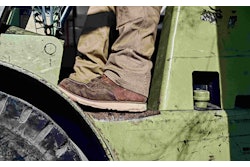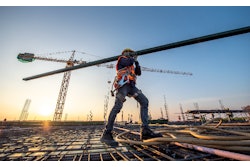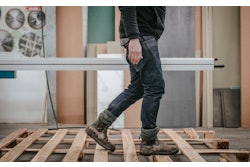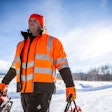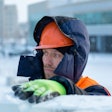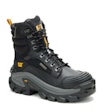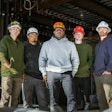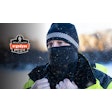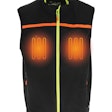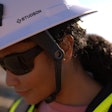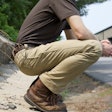
Many construction site job tasks require activities that may put a worker’s knees at risk of discomfort and injury.
The knee is the largest weight-bearing joint in the body. Tasks involving frequent stooping, kneeling, or squatting puts a construction worker’s knees at risk for injury, as noted by the Oregon Occupational Safety and Health Administration (OSHA).
Construction Work Requiring Knee Pads
- Consider wearing knee pads when the job requires frequent kneeling, crawling, and contact with hard surfaces such as in these situations:
- Working on low structures or installing flooring or tiling.
- Trenching tasks in which workers may find themselves kneeling or their legs may often be in uncomfortable positions.
- Demolition, which can be physically demanding and for which knee pads can protect against injuries when kneeling on construction debris.
- Construction site landscaping work that involves weeding, planting, and other tasks.
- Roofing work requiting a lot of kneeling or crawling on shingles or other hard surfaces.
- Welding tasks requiring kneeling or crouching when working on projects that may expose the worker to hot surfaces or sharp objects.
- Plumbing or electrical work which requires workers to access tight spaces and work in positions that can be awkward on the knees.
- Framing, carpentry, and tasks such as installing drywall which may involve frequent kneeling or working in positions that strain the knees.
- Concrete and masonry work entailing pouring, bricklaying or masonry that requires kneeling or having contact against hard surfaces.
Choosing Proper Work Pants
Some construction work pants are designed with pockets at the knee to accommodate knee pads that can be removed as needed. Other construction pants are designed with the pad sewn in or attached at the knee.
As is noted in this IRONPROS article, double knee work pants are constructed with two layers of fabric starting below the knee and running up toward the thigh, serving as an extra layer of reinforced fabric in the knee area.
The extra panel of material is often sewn on and riveted at each corner, providing extra durability to meet the impact a job may have on the knees. They are designed in such a way as to not restrict movement.
Some manufacturers construct double knee pants with knee pad insert slots along the bottom side of the double knee, enabling workers to insert knee pads into the pants. Knee pads are different from knee guards in that the knee pad is inserted inside the slot in the pants for extra cushioning while a knee guard is a shell covering the knee and wrapped around the pant with adjustable straps.
Types of Knee Pads
Buckle or quick-release knee pads feature mechanisms making it quick easy to put on and remove and are indicated for workers whose job tasks require transitioning between kneeling and standing. Strap-on knee pads are secured around the leg by connecting them with straps. While providing protection, they also are versatile and flexible, allowing the construction worker to adjust the fit as needed. Those doing roofing and plumbing tasks may prefer these knee pads.
Soft foam knee pads are constructed with lightweight foam or gel padding encased in a durable fabric or plastic shell. They are considered ideal cushioning for short periods of kneeling, such as electricians and painters doing light to moderate-duty tasks.
Gel-filled knee pads are designed with a gel cushion that evenly distributes pressure across the knee to reduce discomfort and fatigue during extended use. They offer more support and comfort in contract to foam pads and are frequently chosen by those doing masonry, floor installation and tiling.
Hard shell knee pads are designed with a rigid outer shell crafted of rubber or plastic. They are designed for heavy-duty construction work where there is a risk of injury due to the presence of sharp objects or rough surfaces. While the rigid shell provides optimal protection, it can be less comfortable for extended periods of kneeling.
Capless knee pads are lightweight pads worn under or over pants and provide moderate protection for tasks requiring frequent kneeling, but not for prolonged time periods. They are commonly worn when job tasks require mobility and flexibility.
Slip-on knee pads are designed to be worn like sock with no straps. They are easy to put on and remove and are suitable for landscaping tasks.

